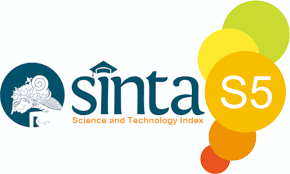THE INFLUENCE OF ARGUMENT QUALITY AND SOURCE CREDIBILITY IN GADGET PRODUCT REVIEW VIDEOS ON YOUTUBE TOWARD THE PERCEIVED INFORMATION USEFULNESS, INFORMATION ADOPTION, AND PURCHASE INTENTION OF GENERATION Z IN INDONESIA
Abstract
Generation Z is a generation that does not easily trust information about a product provided by a brand and they require further verification of the information through various product review videos on YouTube. Through this study, the researcher wants to find out the influence and role of argument quality in product review videos and source credibility of the YouTubers on certain channel on the perceived information usefulness, information adoption, and purchase intention of Generation Z in Indonesia, especially in the technology (gadget) industry. The researcher will use a quantitative research approach using a survey (questionnaire). A total of 267 valid respondents filled out this questionnaire with the criteria, namely Generation Z in Indonesia, who have watched gadget product review videos on the Jagat Review channel on YouTube (specifically in the last 3 months). Based on the results of the analysis, the researcher found that the argument quality in gadget product review videos and the source credibility of the tech YouTubers on certain channel have a great influence on the perceived information usefulness and information adoption of Generation Z in Indonesia, especially those who live in the Java Island area. With good perceived information usefulness and information adoption, it will easily increase the purchase intention of Generation Z in Indonesia towards the gadget products reviewed. Therefore, the researcher recommends that marketers understand the importance of argument quality and source credibility in gadget product review videos as well as collaborate with tech YouTube channels to review and promote gadget products from their companies to reach more customers from Generation Z in Indonesia. In addition, the researcher also has suggestions for the YouTube channel of Jagat Review to increase the engagement of its viewers so that more of them want to accept, adopt, and follow the various suggestions/recommendations given.
References
Ali, M. P. (2024, February 6). Why is Marques Brownlee famous? | Medium. Medium. https://medium.com/@mdparvejali/the-rise-of-marques-brownlee-how-one-youtuber-redefined-gadget-reviews-forever-ee81ccd1ac00
Ameliya, T. M. (2023, October 12). Survei ungkap YouTube jadi platform video paling disukai Gen Z. ANTARA Kantor Berita Indonesia. https://www.antaranews.com/berita/3771111/survei-ungkap-youtube-jadi-platform-video-paling-disukai-gen-z
Annur, C. M. (2023a, March 2). Jumlah Pengguna Internet Global Tembus 5,16 Miliar Orang pada Januari 2023. Katadata. https://databoks.katadata.co.id/datapublish/2023/02/03/jumlah-pengguna-internet-global-tembus-516-miliar-orang-pada-januari-2023
Annur, C. M. (2023b, September 20). Pengguna Internet di Indonesia Tembus 213 Juta Orang hingga Awal 2023. Katadata. https://databoks.katadata.co.id/datapublish/2023/09/20/pengguna-internet-di-indonesia-tembus-213-juta-orang-hingga-awal-2023
Archibugi, D., & Pietrobelli, C. (2003). The globalisation of technology and its implications for developing countries. Technological Forecasting & Social Change/Technological Forecasting and Social Change, 70(9), 861–883. https://doi.org/10.1016/s0040-1625(02)00409-2
Asosiasi Penyelenggara Jasa Internet Indonesia (APJII). (2024, February 7). APJII Jumlah Pengguna Internet Indonesia Tembus 221 Juta Orang. https://apjii.or.id/berita/d/apjii-jumlah-pengguna-internet-indonesia-tembus-221-juta-orang
Bailey, J. E., & Pearson, S. W. (1983). Development of a tool for measuring and analyzing computer user satisfaction. Management Science, 29(5), 530–545. https://doi.org/10.1287/mnsc.29.5.530
Bhattacherjee, N., & Sanford, N. (2006). Influence Processes for Information Technology Acceptance: An Elaboration Likelihood model. Management Information Systems Quarterly, 30(4), 805. https://doi.org/10.2307/25148755
Burgess, J., & Green, J. (2009). YouTube: Online Video and Participatory Culture. Polity. https://ayomenulisfisip.files.wordpress.com/2019/02/youtube-online-video-and-participatory-culture.pdf
Chang, C., & Chang, S. (2023). The Impact of digital disruption: Influences of digital media and social networks on forming digital natives’ attitude. SAGE Open, 13(3). https://doi.org/10.1177/21582440231191741
Cheung, C. M., Lee, M. K., & Rabjohn, N. (2008). The impact of electronic word‐of‐mouth. Internet Research, 18(3), 229–247. https://doi.org/10.1108/10662240810883290
Cohen, J. (1988). Statistical Power Analysis for the Behavioral Sciences. In Routledge eBooks (2nd ed.). https://doi.org/10.4324/9780203771587
Coyle, J. R., & Thorson, E. (2001). The effects of progressive levels of interactivity and vividness in web marketing sites. Journal of Advertising, 30(3), 65–77. https://doi.org/10.1080/00913367.2001.10673646
Creswell, J. W., & Creswell, J. D. (2014). Research Design: Qualitative, Quantitative and Mixed Methods Approaches. https://spada.uns.ac.id/pluginfile.php/510378/mod_resource/content/1/creswell.pdf
Davis, F. D. (1989). Perceived usefulness, perceived ease of use, and user acceptance of information technology. Management Information Systems Quarterly, 13(3), 319. https://doi.org/10.2307/249008
DeGruttola, M. (2019, February 25). Survey reveals how consumers really judge brand authenticity (and influencers). Social Media Today. https://www.socialmediatoday.com/news/survey-reveals-how-consumers-really-judge-brand-authenticity-and-influence/549038/
Erkan, I., & Evans, C. (2016). The influence of eWOM in social media on consumers’ purchase intentions: An extended approach to information adoption. Computers in Human Behavior, 61, 47–55. https://doi.org/10.1016/j.chb.2016.03.003
Etikan, I., Musa, S. A., & Alkassim, R. S. (2016). Comparison of convenience sampling and purposive sampling. American Journal of Theoretical and Applied Statistics, 5(1), 1. https://doi.org/10.11648/j.ajtas.20160501.11
Fornell, C., & Larcker, D. F. (1981). Evaluating Structural Equation Models with Unobservable Variables and Measurement Error. Journal of Marketing Research, 18(1), 39. https://doi.org/10.2307/3151312
Francis, T., & Hoefel, F. (2018, November 12). ‘True Gen’: Generation Z and its implications for companies. McKinsey & Company. https://www.mckinsey.com/industries/consumer-packaged-goods/our-insights/true-gen-generation-z-and-its-implications-for-companies
Frost, J. (2017). Degrees of Freedom in Statistics. Statistics by Jim. https://statisticsbyjim.com/hypothesis-testing/degrees-freedom-statistics/
Frost, J. (2018). Introduction to Bootstrapping in Statistics with an Example. Statistics by Jim. https://statisticsbyjim.com/hypothesis-testing/bootstrapping/
Frost, J. (2021). Standard Deviation: Interpretations and Calculations. Statistics by Jim. https://statisticsbyjim.com/basics/standard-deviation/
Frost, J. (2024). Hypothesis Testing: Uses, Steps & Example. Statistics by Jim. https://statisticsbyjim.com/hypothesis-testing/hypothesis-testing/
Ganesan, D., & Jaiganesh, G. (2023). YouTube’s Impact on Gadget Buying Behaviors of Generation Z (pp. 65–81). https://doi.org/10.9734/bpi/aobmer/v5/7949a
Garg, K. (2024, June 3). The MKBHD Effect: the Reviewer That Determines the Success of Startups. The Teen Magazine. https://www.theteenmagazine.com/the-mkbhd-effect-the-reviewer-that-determines-the-success-of-startups
GCFGlobal. (2023). YouTube: What is YouTube? https://edu.gcfglobal.org/en/youtube/what-is-youtube/1/
GCGGlobal. (2023). Internet Basics: What is the Internet? GCFGlobal. https://edu.gcfglobal.org/en/internetbasics/what-is-the-internet/1/
Ghozali, I. (2011). Aplikasi Analisis Multivariate Dengan Program SPSS versi 19. https://www.academia.edu/86315138/Ghozali_Imam_2011_Aplikasi_Analisis_Multivariate_Dengan_Program_SPSS_versi_19_Semarang_Universitas_Diponegoro
Hair, J. F., Jr, Sarstedt, M., Hopkins, L., & Kuppelwieser, V. G. (2014). Partial least squares structural equation modeling (PLS-SEM). European Business Review, 26(2), 106–121. https://doi.org/10.1108/ebr-10-2013-0128
Hair, J. F., Ringle, C. M., & Sarstedt, M. (2011). PLS-SEM: indeed a silver bullet. Journal of Marketing Theory and Practice, 19(2), 139–152. https://doi.org/10.2753/mtp1069-6679190202
Hamid, M. R. A., Sami, W., & Sidek, M. H. M. (2017). Discriminant Validity Assessment: Use of Fornell & Larcker criterion versus HTMT Criterion. Journal of Physics. Conference Series, 890, 012163. https://doi.org/10.1088/1742-6596/890/1/012163
Huang, T., Chen, W., Chen, C., & Silalahi, A. D. K. (2022). Understanding how product reviews on YouTube affect consumers’ purchase behaviors in Indonesia: an exploration using the Stimulus-Organism-Response Paradigm. Human Behavior and Emerging Technologies, 2022, 1–19. https://doi.org/10.1155/2022/4976980
Hypothesis Test Calculator | 365 Data Science. (2024). 365 Data Science. https://365datascience.com/calculators/hypothesis-test-calculator/
IDN Research Institute. (2024). INDONESIA GEN Z REPORT 2024. In IDN Research Institute. https://cdn.idntimes.com/content-documents/indonesia-gen-z-report-2024.pdf
Islam, T., Hussin, S. R., & Yee, W. F. (2022). Factors Influencing the Information Adoption from Social Media review Platform: Extending Information Adoption Model (IAM) with Information Diagnosticity. Journal of Content, Community & Communication, 16(8), 4–25. https://doi.org/10.31620/jccc.12.22/02
Jagat Review. (2024, April 19). Persaingan GadgetIn VS JagatReview Dibahas TERBUKA! TechPODCAST 008 David Gadgetin [Video]. YouTube. https://www.youtube.com/watch?v=FuSCDM8e6_s
Kaur, P., Stoltzfus, J., & Yellapu, V. (2018). Descriptive statistics. International Journal of Academic Medicine, 4(1), 60. https://doi.org/10.4103/ijam.ijam_7_18
Khadafi, A. (2021, April 1). Membandingkan GadgetIn untuk Awam dan Jagat Review untuk yang Expert. Mojok - Suara Orang Biasa. https://mojok.co/pojokan/membandingkan-gadgetin-untuk-awam-dan-jagat-review-untuk-yang-expert/
Livingston, S. A. (2018). Test Reliability—Basic Concepts. In ETS Research Institute. https://www.ets.org/research/policy_research_reports/publications/report/2018/jysw.html
Malhotra, N. K., & Birks, D. F. (2005). Marketing Research : An Applied Approach. https://nibmehub.com/opac-service/pdf/read/Marketing%20Research%20An%20Applied%20Approach-%20Malhotra-%20N.K-%202ed.pdf
Manap, K. A. (2013). The Role of User Generated Content (UGC) in Social Media for Tourism Sector. Business, Computer Science. https://www.westeastinstitute.com/wp-content/uploads/2013/07/Khairul-Hilmi-A-Manap.pdf
MasterClass. (2022, September 23). Marques Brownlee’s Life and Career as a Content Creator. https://www.masterclass.com/articles/marques-brownlee
MaxData. (2022, April 23). All of Marques Brownlee’s channels | Subscriber Count History (2008-2022) [Video]. YouTube. https://www.youtube.com/watch?v=wyZwpRdLMok
Maydeu-Olivares, A., & García-Forero, C. (2010). Goodness-of-Fit testing. In Elsevier eBooks (pp. 190–196). https://doi.org/10.1016/b978-0-08-044894-7.01333-6
Mccracken, H. (2023a, November 14). How MKBHD became a BFD: A timeline of Marques Brownlee’s career-making YouTube videos. Fast Company. https://www.fastcompany.com/90979902/marques-brownlee-youtube-videos-timeline-greatest-hits
Mccracken, H. (2023b, November 14). Inside Marques Brownlee’s tech review studio: The YouTube star on gadgets, growth, and staying chill. Fast Company. https://www.fastcompany.com/90978935/marques-brownlee-mkbhd-youtube-tech-review
Meltwater & We Are Social. (2024, March 28). Digital 2023 - We are Social Indonesia. We Are Social Indonesia. https://wearesocial.com/id/blog/2023/01/digital-2023/
Mondalek, A. (2023, April 20). Mind the Gap: Loyal Z: Why Gen Z customers won’t be tied down to one brand. McKinsey & Company. https://www.mckinsey.com/~/media/mckinsey/email/genz/2023/04/2023-04-04b.html
Muhson, A. (2022). Analisis Statistik dengan SmartPLS: Path Analysis, Confirmatory Factor Analysis, & Structural Equation Modeling. https://staffnew.uny.ac.id/upload/132232818/pendidikan/Panduan%20Penggunaan%20SmartPLS.pdf
OliverWyman. (2023). What business needs to know about the generation changing everything. Oliver Wyman Forum. https://www.oliverwymanforum.com/global-consumer-sentiment/a-gen-z.html
Petty, R. E., & Cacioppo, J. T. (1986). The elaboration likelihood model of persuasion. In Advances in experimental social psychology (pp. 123–205). https://doi.org/10.1016/s0065-2601(08)60214-2
Pfeuffer, A., Lu, X., Zhang, Y., & Huh, J. (2020). The effect of sponsorship disclosure in YouTube product reviews. Journal of Current Issues and Research in Advertising, 42(4), 391–410. https://doi.org/10.1080/10641734.2020.1859023
Rabolini, S. (2023, August 23). Everything you need to know about Gen Z Loyalty. White Label Loyalty. https://whitelabel-loyalty.com/blog/loyalty-industry-insight/everything-you-need-to-know-about-gen-z-loyalty
Rainer, P. (2023, August 29). Sensus BPS: Saat ini Indonesia didominasi oleh Gen Z. GoodStats Data. https://data.goodstats.id/statistic/sensus-bps-saat-ini-indonesia-didominasi-oleh-gen-z-n9kqv
Sarstedt, M., Ringle, C. M., & Hair, J. F. (2017). Partial Least Squares Structural Equation Modeling. https://link.springer.com/referenceworkentry/10.1007/978-3-319-05542-8_15-1
Smith, D. (2014, August 5). Meet “The best technology reviewer on the planet,” who is only 20 years old. Business Insider. https://www.businessinsider.com/meet-marques-brownlee-the-best-technology-reviewer-on-the-planet-2014-8
Snipp. (2023, March). Inside the Gen Z Mind Consumer survey. https://www.snipp.com/inside-the-gen-z-mind-consumer-survey
Solomon, N. (2024, June 6). The 10 best tech YouTubers you should be watching in 2024. WiseStamp. https://www.wisestamp.com/blog/best-tech-youtubers/
Spears, N., & Singh, S. N. (2004). Measuring Attitude toward the Brand and Purchase Intentions. Journal of Current Issues and Research in Advertising, 26(2), 53–66. https://doi.org/10.1080/10641734.2004.10505164
Stamm, K., & Dube, R. (1994). The relationship of attitudinal components to trust in media. Communication Research, 21(1), 105–123. https://doi.org/10.1177/009365094021001006
Streamy Awards. (2020). 10th Annual Streamy Nominees & Winners. The Streamy Awards. https://www.streamys.org/nominees-winners/10th-annual-nominees/
Sussman, S. W., & Siegal, W. S. (2003). Informational Influence in Organizations: An Integrated Approach to knowledge adoption. Information Systems Research, 14(1), 47–65. https://doi.org/10.1287/isre.14.1.47.14767
Teniwut, M., & Wisnu (Eds.). (2022, October 21). Sejarah Internet, kapan mulai masuk Indonesia. mediaindonesia.com, All Rights Reserved. https://mediaindonesia.com/teknologi/531578/sejarah-internet-kapan-mulai-masuk-indonesia
Thinakaran, K., Dhillon, J. S., Gunasekaran, S. S., & Chen, L. F. (2018). Developing a privacy compliance scale for IoT health applications. Computer Science and Information Technology, 6(4), 54–62. https://doi.org/10.13189/csit.2018.060402
TikTok vs YouTube: Which is worth your time? (2023, September 24). Adobe Express. https://www.adobe.com/express/learn/blog/tiktok-vs-youtube
Turney, S. (2022, April 29). Student’s t Table (Free Download) | Guide & Examples. Scribbr. https://www.scribbr.com/statistics/students-t-table/
Widi, S. (2023, June 4). TikTok Jadi Medsos Utama Gen Z untuk Cari Informasi pada 2022. Data Indonesia. https://dataindonesia.id/gaya-hidup/detail/tiktok-jadi-medsos-utama-gen-z-untuk-cari-informasi-pada-2022
Wong, K. K. (2013). Partial least square structural equation modeling (PLS-SEM) techniques using SmartPLS. ResearchGate. https://www.researchgate.net/publication/268449353_Partial_least_square_structural_equation_modeling_PLS-SEM_techniques_using_SmartPLS
Wu, C., & Shaffer, D. R. (1987). Susceptibility to persuasive appeals as a function of source credibility and prior experience with the attitude object. Journal of Personality and Social Psychology, 52(4), 677–688. https://doi.org/10.1037/0022-3514.52.4.677
Zeng, N., Liu, Y., Gong, P., Hertogh, M., & König, M. (2021). Do right PLS and do PLS right: A critical review of the application of PLS-SEM in construction management research. Frontiers of Engineering Management/Frontiers of Engineering Management, 8(3), 356–369. https://doi.org/10.1007/s42524-021-0153-5



















